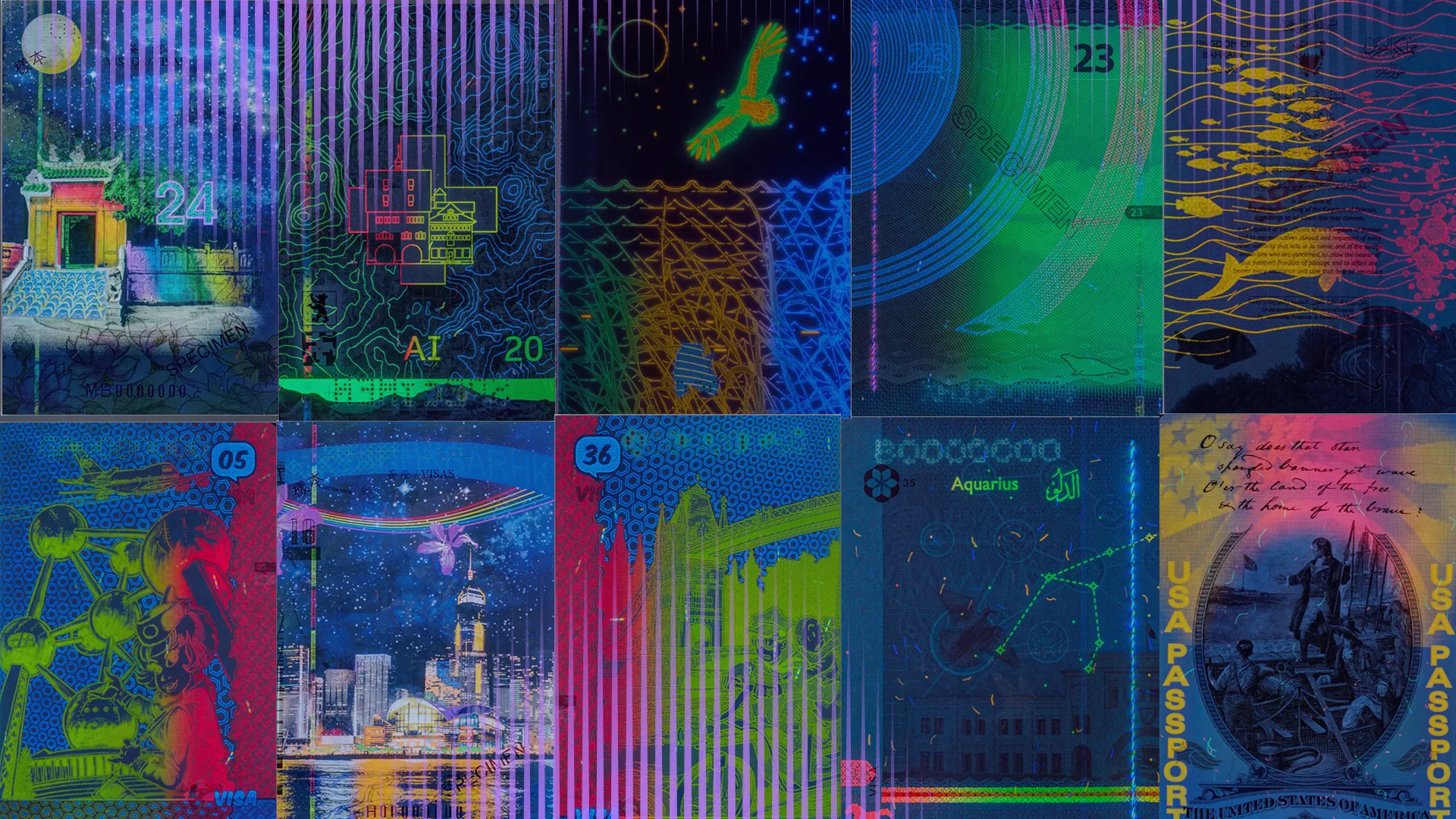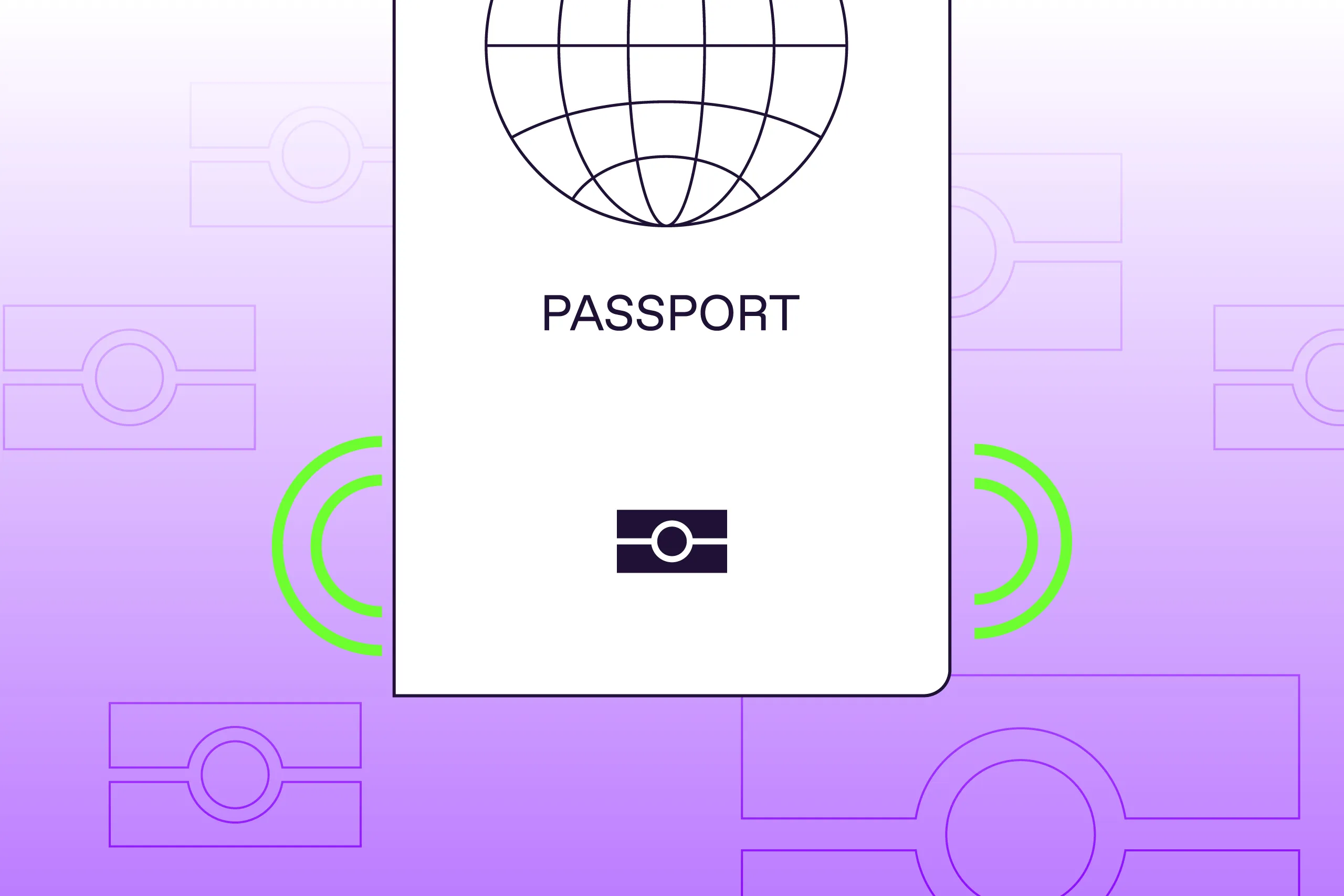In March, 2024, Icelandic authorities began issuing a new version of identity cards for the country’s citizens. As the first example of an ID document that complies with the ICAO specifications for additional formatting of TD1 documents, this is also the first-of-its-kind portrait-oriented ID card in the world.
In this article, we’ll dig deeper into the specification requirements, the verification procedures for this unique type of ID card, and the future of document formats.
The idea and reasons behind the recent ICAO specification for TD1 documents
Published in September 2023, the ICAO document describes new layouts for machine-readable official travel documents (MROTDs) issued in the TD1 format.

TD1-sized ID documents were only landscape-oriented until September 2023.
Earlier, all these documents could be issued in one of five landscape-oriented layouts. Now, ID issuing authorities can also consider portrait-oriented layouts.
Here are the key features distinguishing this new generation of TD1-sized documents:
A larger portrait of the holder on the front side
New vertical ID layout options for the front and reverse sides
Optional document and personal data elements, along with the holder’s signature, are moved to the reverse side
The Card Access Number (CAN) is presented both as a QR code and as a visual number on the front side
A new format of barcode is now in use
According to the ICAO specifications, two main issues motivated these changes. Firstly, some member states are interested in enlarging the holder’s photo to more effectively protect their MROTDs from forgery and photo substitution attacks. Secondly, they want to incorporate access data for RFID chips in electronic identity documents into 2D barcodes, which streamline reading and verification of these IDs both with mobile applications and ID readers.
These enhancements provide additional benefits for inspectors. In particular, it’s more convenient to match the ID holder with their photo in the presented document during a manual identity verification check. Plus, the QR code is easier to work with for smartphones, which users employ while enrolling or authenticating in online services.
We’ll deliver hand-picked content from Regula’s experts into your inbox
The new Icelandic identity card profile

In 2024, Iceland renewed its ID card for the first time since 1965. The document is available in two versions: one for use abroad (see the photo) and one for use within the country only.
A vertical ID card issued in Iceland has two official versions:
ID card as a travel document: This card (see the image above) can be presented as a travel identity document within the European Economic Area. It includes the nationality text field and a machine-readable zone (MRZ). Since Icelandic ID cards were previously not usable abroad, the current renewal may contribute to the popularity of this document version.
ID card as a domestic document: As an identity document without travel rights, this card has no MRZ or data about nationality. Primarily, it appears to be used as a proof of identity for minors.
A QR code on the front side contains the CAN involved in validating an RFID chip, as the card is an example of a biometric identity document. On the reverse side, there is a larger barcode that contains digitally signed visible information from the card, a tiny facial image, MRZ, and full name in Icelandic. Here are more details on the security features utilized in the document.
The travel version of the card is issued in both English and Icelandic. This means transliteration of the unique Icelandic alphabet into Latin is required to correctly verify all data. Reading the barcode from the reverse side can also be a little tricky since the information is encoded in a new format, distinguished from those used in traditional barcodes.
Interestingly, this is the first renewal for this type of document since 1965. This may be related to the fact that ID cards were an uncommon ID type for Icelandic people, as the majority of them use driver’s licenses as the main proof of identity in the country.
However, the status quo may change. According to National Register statistics, the Icelandic authorities issued 647 identity cards in 2019, 1,555 in 2023, and 1,199 in 2024. Thus, businesses located in Europe can now expect Icelandic IDs in their systems.
Is the vertical ID format an innovation?
Countries have already been issuing portrait-oriented identity documents for a while.
In the US, this format is used for driver’s licenses for minors. This type of document is frequently used as a proof of identity in the country. This approach helps inspectors, including non-experts, quickly identify that the document holder is under 21 during age verification.

Some US states issue vertical driver’s licenses for citizens under 21.
Sometimes, adult identity documents also have a portrait-oriented format. For instance, similar to Icelandic IDs, Cameroon introduced the new vertical orientation in early 2025.

By rotating to portrait, the Cameroon ID is more suitable for smartphone cameras and can accommodate a larger photograph of the holder, which improves facial recognition.
Some Mexican states, including Queretaro, Baja California, Distrito Federal, Mexico, Puebla, and Quintana Roo, issue such drivers’ licenses.
In India, there are portrait-oriented voter identity cards.

In India, there are vertical identity cards for electors.
Verifying these types of documents isn’t challenging. Typically, they are domestic IDs, which don’t contain an MRZ or CAN. Therefore, if there is an appropriate layout in the IDV software document template database to apply and recognize all the data, the validation process is straightforward. Regula solutions rely on over 13,600 ID templates, and this number is constantly increasing with regular updates.
The future of portrait-oriented identity documents: What to expect and prepare for
Representatives from France, Germany, the Netherlands, Singapore, and other states around the world were among the working group developing the new ICAO specifications. Given this fact, the adoption of new vertical ID layouts by these countries is a logical step for future updates.
TD1 is primarily a format for identity cards and driver’s licenses that typically have a validity of five to ten years. A large number of European countries have already updated their identity cards over the past few years. Therefore, the next renewals will likely not begin earlier than 2025.
On the other hand, an ID update is always a significant event for a country, as it is associated with substantial expenses and, sometimes, public concerns. This means that the release of new versions may not happen anytime soon. For instance, the updated Portuguese ID card that will be issued in June has a conventional format.
Another point is that the ICAO specifications declare identity document security and integrity as the primary goals. If portrait-oriented ID documents appear more secure than their traditional formats, it’s likely that other countries will take into account these additional TD1 formats during upcoming renewals.
Regardless, your organization should be ready to verify this type of ID both on-site and online. Verifying the brand-new Icelandic ID cards is good training before the big game.
Here is a checklist to ensure that your IDV software is prepared for this challenge:
The new Icelandic identity card layout is added to the document template database
The solution can recognize and validate the new barcode format
NFC verification is enabled for biometric documents with an RFID chip
The set of authentication checks includes document liveness detection, which involves recognizing dynamic security features added to the ID card like Multiple Laser Images and Optically Variable Ink images, since fraudsters can submit AI-generated images
Regula Document Reader SDK does it all. Book a call to discuss details with one of our representatives.





